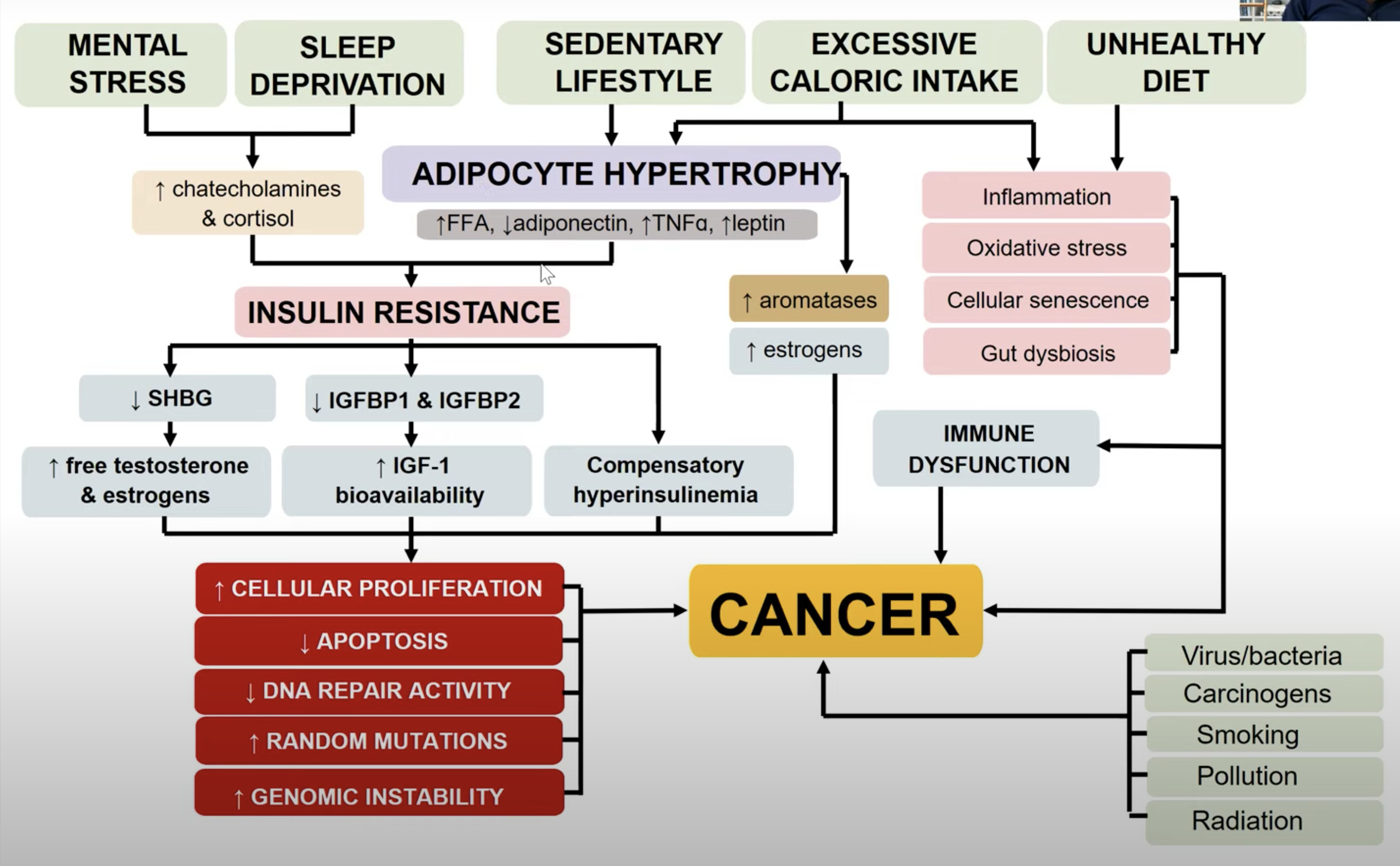A fascinating, fast-paced video which lists 34 possible mechanisms through which animal products may cause cancer!
Clinicians and anybody who understands biochemistry may watch this video and do their own research into these mechanisms.
Excerpt from offset 0:00 of Dr Rogers' video:
Dr Michael Greger: An excerpt from Diabetes as a Disease of Fat Toxicity (5 mins, 2015) by Dr Greger corroborates the idea:
Dr Luigi Fontana:
Excerpt from offset 1:16 of Dr Rogers' video:
Dr Greger: See IGF-1 & Cancer for a 15-part video series by Dr Greger from 2012 that explains the IGF-1 narrative in plain English.
Excerpt from offset 4:23 of Dr Rogers' video:
Dr Greger: See Animal Products & TOR Overactivation for videos by Dr Greger explaining ongoing research into 'over-stimulated mTORC1 signaling'.
Excerpt from offset 12:54 of Dr Rogers' video:
Dr Greger: See TMAO for a collection of Dr Greger videos on the subject.
Excerpt from offset 14:48 of Dr Rogers' video:
Dr Greger: See Processed Meat is an IARC Group 1 Carcinogen, Nitrites in Processed Meat and n-Nitroso Compounds In Meat.
Processed meat has been classified as IARC Group 1 Carcinogen. In other words, scientists have conclusively established that processed meat causes cancer. And evidence is mounting that red meat should be in the same category. But what about white meat, fish, eggs and dairy — are these carcinogenic too? See Eggs & Cancer, Dairy & Cancer.

 Instagram
Instagram YouTube
YouTube